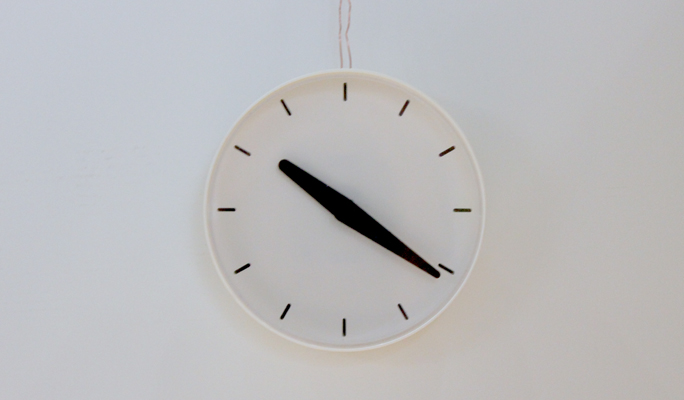
Reexamining data
Time is unmeasurable. It doesn't have the benefit of form or sound lending us a deeper understanding of what it is. And yet, we have designed the clock - a system to measure the unmeasurable. Currently, most clocks are digital. They work by translating a signal which they receive from a GPS satellite. We believe this digital clock offers higher accuracy, but GPS receivers also retain the possibility for error. The varying quality of GPS receivers across multiple clock devices (such as a computer and a phone) means that time does not read universally. Even when resetting them to be same, they will eventually return to a state of discrepancy. These discrepancies are often so familiar, that they remain irrelevant, or ignorable. We are reminded of their existence only when they cause the next error: causing us
to be late for our noon appointment, or missing the 10-o-clock train. What are other examples
of these kinds of ignorable errors and what kind of effects might they have on our lives? If
they are ignorable, couldn't they affect our lives without us noticing?


Case Study
In order to explore these kinds of questions, I conducted a short case study exploring clock drift. I began by gauging the time difference between various clocks using my cell phone as a primary reference. By the end of the day, I calculated 13 incidents of clock drift, resulting
in a total loss of eight minutes. Of course, we already know about this phenomena, but somehow
we rarely pay attention. This simple case study provides a context to reconsider this seemingly mundane experience. Once we consciously consider their existence, could we learn to actively use these gaps in time?
It is well known that we do not share a universal understanding of time. Many psychological studies have explored the existence of a unique individual's time perception which dictate how fast or slow we sense time to pass. In essence, the common impression of time as an absolute truth has been disproven and replaced with a clause for subjectivity.
For most, our experience with clock displays spans across at least two or three devices in any given space. There is a conscious awareness of our devices' time discrepancies. In a way, it's
as if we each have the ability to choose our time zone. My computer reads two minutes slower,
for example, than my phone. So when using my computer at school, my world goes two minutes slower than it might otherwise.